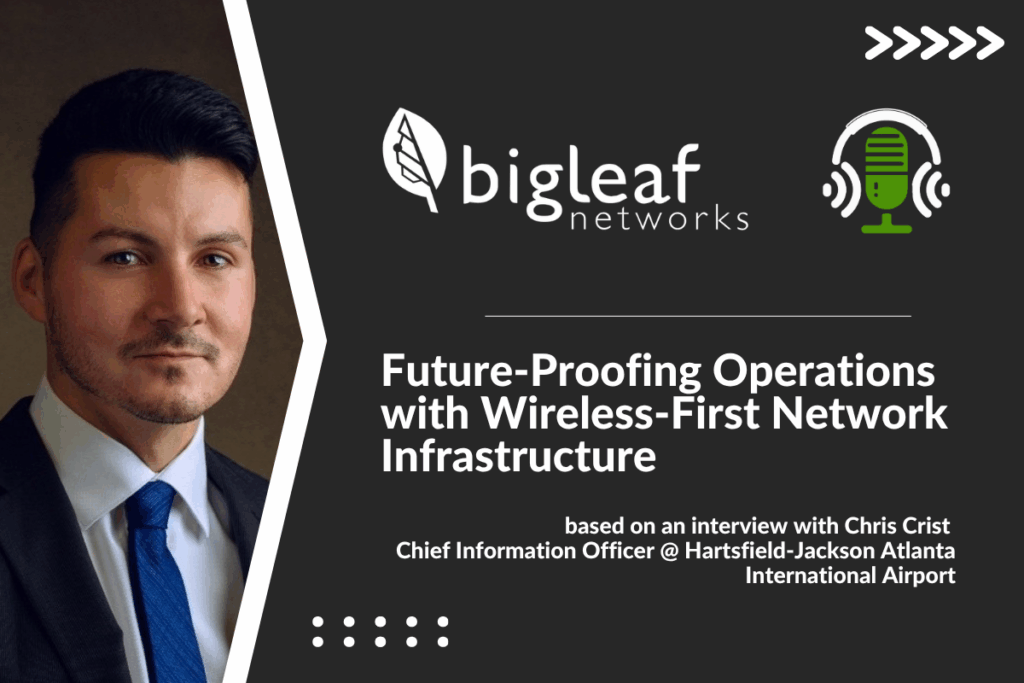A Wake-Up Call in 17 Access Points
You expect complaints when 17 access points go down in the world’s busiest airport. But what surprised Chris Crist, CIO at Hartsfield-Jackson Atlanta International Airport, was the why.
“We didn’t realize how reliant the airlines were,” he shares. “They had pivoted to using our wireless network almost exclusively for conducting business.”
The outage exposed something deeper: wireless had quietly become the airport’s critical infrastructure. It wasn’t just about passenger Wi-Fi. It was powering ticketing, boarding, operations.
That realization sparked a strategy shift—from wireless-enabled to wireless-first.
Resiliency Is the Foundation for Innovation
Chris knew this shift wasn’t just about coverage. It had to be built on reliability, redundancy, and reach. His team invested in new access point infrastructure across terminals, ensuring continuous service even under strain.
This paved the way for projects like:
- AI overlays on 7,000 CCTV cameras for real-time object detection
- Thousands of IoT devices for monitoring elevators, air quality, and HVAC
- Biometric boarding with zero wait times
The tech is impressive. But it only works because the wireless infrastructure is designed to support it—at scale.
Real-Time AI Security? Only If the Network Can Keep Up
One of the most future-forward initiatives at ATL is the use of AI-enhanced camera networks. Chris is leading a project to apply artificial intelligence across the airport’s existing security systems.
“With AI, you can filter within seconds to the exact location of an individual.”
What used to take hours—or even days—can now be done in moments. That means faster response, smarter security, and peace of mind for passengers and staff.
This kind of real-time intelligence demands a high-availability wireless backbone. Without it, every second saved on analysis would be lost to lag or failure.
Why Wireless-First = Future-Ready
Chris frames wireless-first network infrastructure not just as a tactic, but as a business strategy for resilience. When your organization runs 24/7 and every second matters, downtime isn’t just an inconvenience—it’s a liability.
That’s why ATL has also invested in:
- Hot-standby data centers in geographically separate locations
- Redundant distribution frames across all concourses
- A proactive model of network health monitoring and failover
“We have to become more efficient with what we have. It’s through technology that we’re going to make that work—and we’ll need to rely more on wireless capabilities to do that.” – Chris Crist
The Lesson: Don’t Wait for a Crisis
Whether you run a hospital, a factory, a university, or an airport—your wireless infrastructure already does more than you think. The question is whether it’s built to carry you forward.
- Treat every outage as insight.
- Build wireless-first, not as a backup—but as your baseline.
- Invest in future-ready systems that support AI, automation, and growth.
Chris Crist’s leadership shows how IT resilience can be a growth lever—not just an insurance policy.
Let’s Go Beyond the Connection – Check out our podcast homepage
🎧 Listen to the full conversation
▶️ Watch more episodes
📬 Subscribe to the LinkedIn newsletter
🎙️ Audio-only feed on Captivate
Go Beyond the Connection Episode 17 with Chris Crist:
- Why CIOs Are Turning to Wireless-First Network Infrastructure
- Why Wireless-First IT Strategy Is Gaining Executive Attention
- When Cabling Hits the Limit, Wireless-First Takes Over
Related Links:
